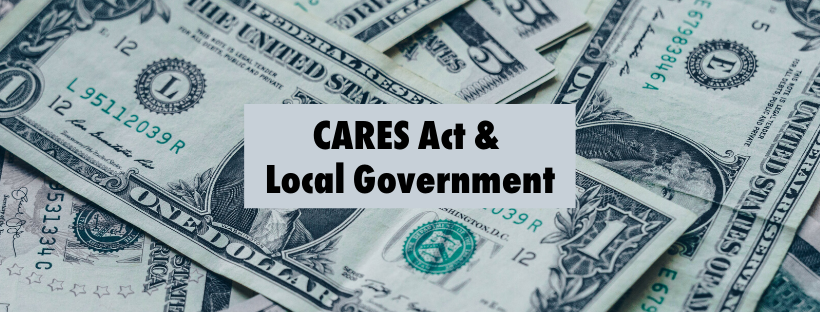
This post is shared by an ELGL member who wishes to post anonymously (it’s the same member who wrote this great post).
Your government may have heard that the US Congress recently passed the Coronavirus Aid, Relief, and Economic Security Act (CARES Act). Perhaps you are interested in what this means for your state and local government and why you should care.
Relevant to State and Local Governments, the CARES Act provided $150 million toward the Coronavirus Relief Fund. After carve outs for outlying territories and tribal entities, $139 million is left to State and Local Governments.
The distribution is based on the latest Census data available, with a $1.25 billion small state minimum. The United State Treasury administers the funds to the State Governments. If your local government is 500,000 or greater, you may petition the Treasury for a direct payment. Direct payments to local governments is capped at 45% of the State allocation. The State’s receive the remainder of the allocation (55%) which may also be used for local payments as well.
What are the eligible uses? The payments can be used for the following:
- Any expenditure incurred due to Covid 19
- Were not accounted for in the most recent budget passed by the entity as of the date of the CARES Act
- This is what is non as a “non-supplant” clause where the Federal government will not pay for something that the states and localities had already planned to undertake.
- Were incurred from the period of March 1, 2020 to December 31, 2020.
What are the large concerns for State and Local governments?
- A government may have incurred an expenditure prior to March 1, 2020 to deal with the pandemic
- More importantly, a State and Local government has likely seen large revenue drop offs resulting from:
- Conforming with the IRS move of the tax filing deadline
- Reduced sales tax revenue
- Reduced income tax revenue
- Reduced fee revenue associated with closures, shelter in place, social distancing requirements
- Etc.
What should your local government do?
- Document, Document, Document:
- Designate an office and/or individual as the single point of contact for Coronavirus information for the purpose of compiling information, developing report templates, reporting, making budget requests, and and responding to state officials
- If you haven’t already done so, set up accounting rules in your system to track all relevant pandemic expenditures (staff overtime, disinfecting, purchase of supplies related to the pandemic, providing uninterrupted utility service even with non-payment of bills, etc) and report in a uniform manner
- Identify the State office that will be coordinating the funds from the US Treasury. This will likely be your state budget office.
- Begin analysis of lost revenue from the pandemic. Even if the bill currently does not appear to allow reimbursement of such revenue, begin an analysis of lost tax and fee revenue. Such items can be:
- Reduced sales tax revenue from closed businesses
- Reduced revenue from convention center closing
- Reduced gate revenue from closing venues
- Lost revenue from business licensing fees
- When in doubt, or if there is not a direct bill available, start performing an analysis (look at the monthly collections from fees for the last three to five years to document a shortfall, for example).
- Use the above information to advocate for lost revenue to be eligible by contacting your relevant industry representatives to lobby Congress (ICMA, GFOA, etc) and the relevant state budget office who is managing the payout of funds.
